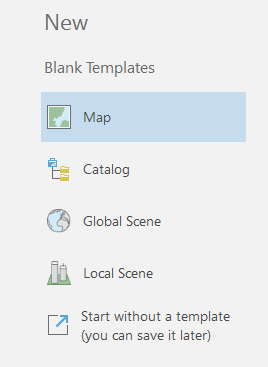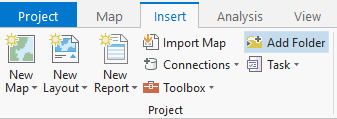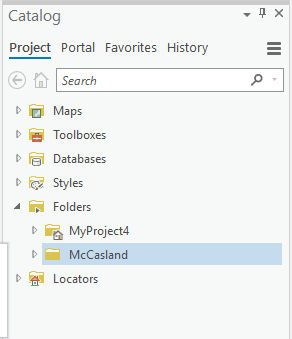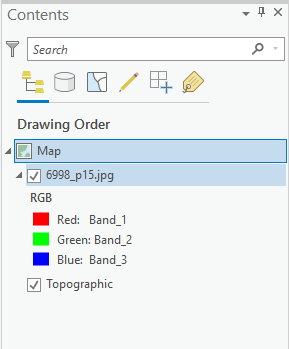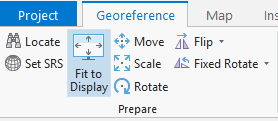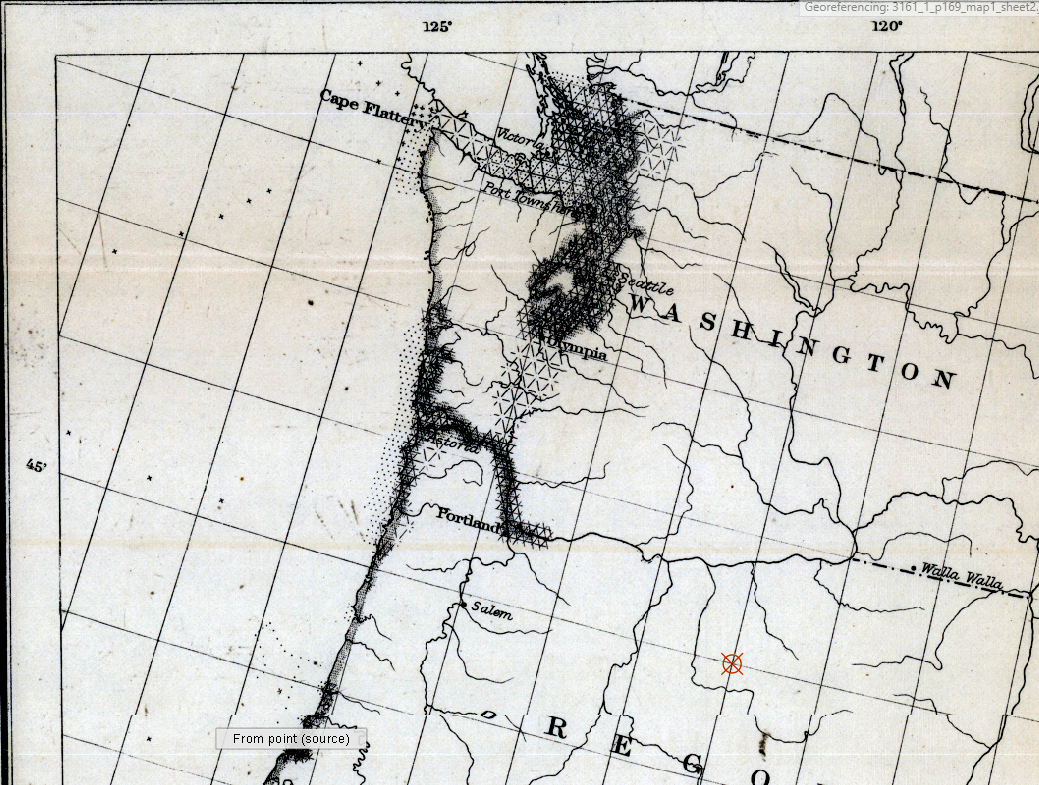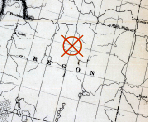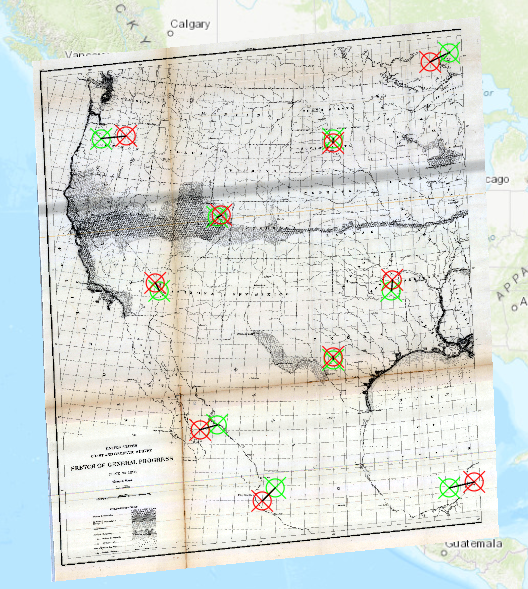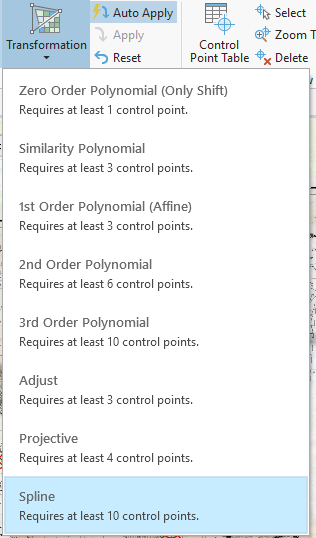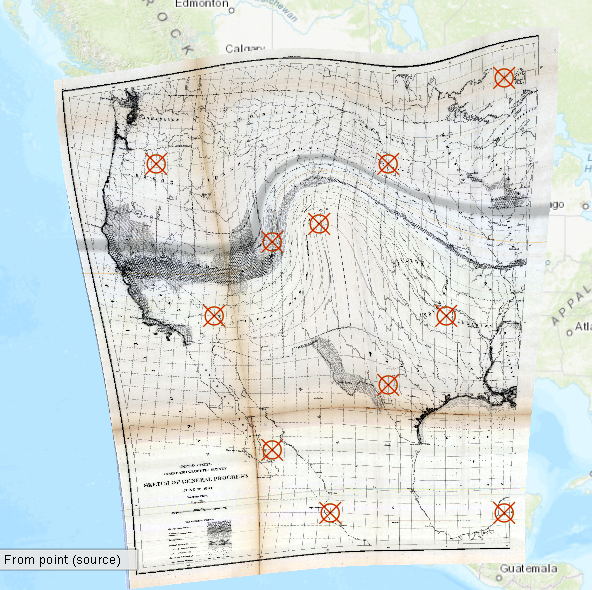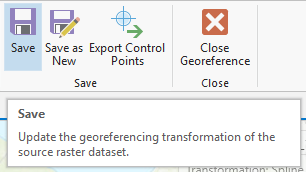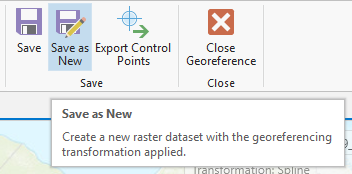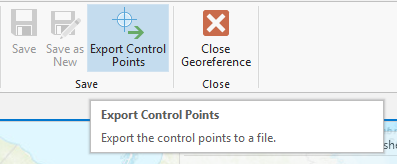
This work is licensed under a Creative Commons Attribution-ShareAlike 4.0 International License.
About
Last Updated [06/06/2019]
Created by OSU Maps and Spatial Data

Table of Contents
- Introduction
- Georeferencing with ArcGIS Pro
-
- Starting a New Project
-
- Adding Files
-
- Georeferencing
-
-
- Adding Control Points
-
-
-
- Transforming the Image
-
-
-
- Deleting Control Points
-
-
- Saving the Project
- Conclusion
- Further Reading/Resources
Introduction
Georeferencing is the process of adding geographic information to a raster image (i.e. maps, satelite images and aerial photographs). This allows mapping software to place the image in its real-world location. This is done by assigning geographic coordinates to the raster’s pixels.
Georeferencing with ArcGIS Pro
Starting a New Project
- To begin a new project, open ArcGIS on your desktop.
- Click Map under New, Blank Templates.
- Name the project and choose a file location that will be easy to access. Then click OK. A new world map should open.
Adding Files
Now that a new project has been created, a folder connection must be added to import data.
- To do this, click Add Folder under the Insert tab of the toolbar to create a folder connection.
- Select the desired folder and click OK.
- The folder connection should appear under Folders in the Catalog pane.
- Locate desired data. Right click the file and click Add to Current Map. The selected file is now added to the project and should appear in the Contents pane. It is okay if the raster is not displayed on the map as long as the file is visible in the Contents pane.
Note: For georeferencing in ArcGIS Pro, JPGs are the preferred file type.
Georeferencing
Once a file has been added to the project, the georeferencing process can begin.
- In order to start georeferencing, the desired file must be selected in the contents pane.
- Click Georeference under the Imagery tab of the toolbar. A new Georeference tab should appear on the toolbar.
- Click Fit to Display under the Georeference tab. If the raster image was not visible before, it should now appear on the map. The size of the image can be adjusted by zooming in or out and clicking Fit to Display as needed, or by using the Move, Rotate and Scale tools. The image does not need to be the exact size of the geographic area it covers. This will be corrected during the georeferencing process.
##### Adding Control Points Control points are used to align pixels on the raster image with real life coordinates.
- To add control points, click Add Control Points in the Adjust column of the Georeference tab.
- For maps, locate the point of an intersecting latitude and longitude line on the raster image and click. A red box should appear, indicating the selection on the map. Be as precise as possible.
- Turn off the raster layer by clicking the check box next to its name in the Contents pane.
- Find and select the corresponding coordinates on the original world map. Be as precise as possible to ensure minimal error. Once this is done, a control point is added.
- Continue this step until enough control points are added for the desired transformation.
Note: A minimum of four control points should be placed. Spline is the preferred transformation for accuracy and requires 10 or more control points, but there are other transformations when this number of control points is not possible. The more control points that are added, the more precise the transformation will be. Also, it is best to have the control points evenly distributed throughout the map to reduce the chances of transformation error.
##### Transforming the Image Transforming the image allows the raster image to be manipulated so the control points are aligned.
- To transform the image, ensure that all necessary control points have been placed. Note: You can add more control points even after the image has been transformed.
- Click the down arrow under the Transformation icon in the adjust section of the georeference tab. Then select the desired transformation.
Note: Spline is preffered because it renders the most accurate transformations.
- The image is now transformed and can be saved or edited if desired.
Deleting Control Points
Do not fret if a control point is misplaced or results in a skewed image. They are easy to delete!
- To delete a control point, click Control Point Table in the Review section of the Georeference tab.
- A table will open at the bottom of the screen. This table shows all of the control point data. If the incorrect control point is unknown, click the checkbox next to a point to uncheck it. If the image becomes unskewed, this is the faulty control point.
- To delete a control point, click Delete in the Review section of the Georeference tab.
Saving the Project
When finished with the project, it is important to ensure that it is saved properly. Clicking the save icon in the top left corner of the screen will not save the georeferenced data.
There are two ways to ensure a proper save.
-1. Click Save in the Save section of the Georeference tab. This will update the existing raster file that was imported into the project
-2. Click Save as New in the Save section of the Georeference tab. This will allow a new and seperate file to be created. The file can be renamed and saved in the desired location.
You can also export the control point data as a seperate file.
- Click Export Control Points in the Save section of the Georeference tab. This will create a text file that contains the control point data.
- Name the file and save it in the desired location.
After all of this is done, it is important that the project is closed correctly.
- Click Close Georeference under the Georeference tab of the toolbar.
The project can be closed and ArcGIS Pro can be exited.
(What about the lat and long lines?)
Conclusion
Georeferencing is a very usefull skill and is made simple by ArcGIS Pro. It only takes a little practice and time to transform a raster image by addind geographic information to its pixels.
